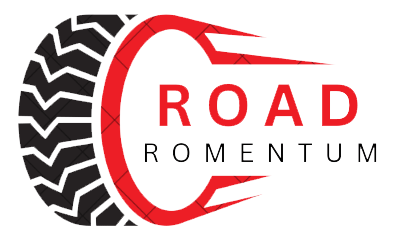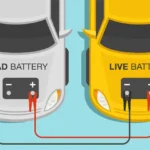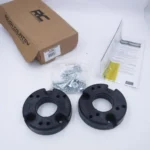How to Rebuild a 5.4 Ford Engine : Proven Tips for Success
To rebuild a 5.4 Ford engine, begin by disassembling the engine, inspecting and replacing worn parts, machining the block and cylinder heads, then reassembling with new components and gaskets. Rebuilding a 5.4 Ford engine involves several steps to ensure its performance and longevity.
Whether for restoration or performance enhancement, a methodical approach is critical. This guide will provide essential steps and tips to rebuild a 5. 4 Ford engine, including disassembly, inspection, machining, and reassembly. By following these detailed and step-by-step instructions, you can effectively rebuild a 5.
4 Ford engine, ensuring optimal performance and reliability. Whether you’re a seasoned mechanic or a DIY enthusiast, this comprehensive guide will help you successfully rebuild your 5. 4 Ford engine.

Credit: blessedperformance.com
Understanding The Engine Components
Before diving into the process of rebuilding a 5.4 Ford engine, it’s crucial to understand the fundamental components that make up the engine. By gaining insight into the piston and rod assembly, cylinder block and cylinder heads, as well as the oil pump and oil pan, you’ll be better equipped to undertake the rebuilding process with confidence.
Piston And Rod Assembly
The piston and rod assembly plays a pivotal role in the functionality of the engine. This component is responsible for converting the energy created by the combustion process into mechanical motion. The piston moves up and down within the cylinders, whereas the connecting rods transmit this motion to the crankshaft, ultimately powering the vehicle. It’s essential to ensure that the piston rings are intact and that the connecting rods are in optimal condition during the rebuilding process.
Cylinder Block And Cylinder Heads
The cylinder block and cylinder heads form the foundation of the engine. The cylinder block houses the cylinders where the combustion process occurs, while the cylinder heads sit on top of the block, sealing the combustion chambers. It’s crucial to inspect these components for any signs of wear or damage during the rebuilding process. Additionally, ensuring proper alignment and sealing of the cylinder heads is essential for optimal engine performance.
Oil Pump And Oil Pan
The oil pump and oil pan are integral to lubricating and cooling the engine. The oil pump is responsible for circulating oil throughout the engine, while the oil pan stores the oil and is equipped with a pickup tube to ensure a steady supply of oil to the pump. During the rebuilding process, it’s imperative to inspect these components for any signs of damage and to ensure that the oil passages are clean and unobstructed for proper lubrication of the engine.
The Importance Of Inspecting
When rebuilding a 5.4 Ford engine, a crucial step is inspecting the engine thoroughly to assess its condition. This crucial step ensures that any wear and tear are identified, and necessary replacement parts are determined. Inspecting the engine provides a clear picture of the work that needs to be done and helps prevent any potential issues in the future.
Assessing Engine Condition
Before beginning the rebuild process, it’s essential to thoroughly assess the overall condition of the 5.4 Ford engine. This includes inspecting the internal components for any signs of damage or wear. A comprehensive assessment can reveal potential issues that may need to be addressed during the rebuilding process.
Identifying Wear And Tear
Inspecting the engine allows for the identification of wear and tear on critical components such as pistons, bearings, and gaskets. By carefully examining each part, it becomes possible to pinpoint any areas that require attention or replacement, ensuring that the rebuilt engine performs optimally.
Determining Necessary Replacement Parts
Through meticulous inspection, it becomes easier to determine which parts of the 5.4 Ford engine require replacement. This allows for the accurate identification of the necessary replacement components, ensuring that the engine is restored to its optimal functionality.
Gathering The Essential Tools
Gathering the essential tools is the first step in rebuilding a 5.4 Ford engine. Having the right equipment and supplies is crucial for a successful engine rebuild. You will need a variety of tools to disassemble and reassemble the engine, so it’s important to ensure you have everything you need before getting started.
Engine Hoist And Stand
Having an engine hoist and stand is essential for safely removing the engine from the vehicle and holding it in place during the rebuild process. An engine hoist allows you to lift the engine out of the vehicle, while an engine stand provides a stable platform for working on the engine components.
Torque Wrench And Socket Set
A torque wrench and socket set are indispensable for tightening and loosening bolts to the manufacturer’s specifications. Proper torque is crucial to ensure the engine components are securely fastened, so having a reliable torque wrench and socket set is essential for the rebuild process.
Piston Ring Compressor And Bearing Installer
When it comes to assembling the engine, a piston ring compressor is necessary for properly installing piston rings onto the pistons. Additionally, a bearing installer is vital for ensuring bearings are seated correctly in the engine. These tools are indispensable for maintaining precision during the rebuilding process.
Disassembling The Engine
Disassembling the engine is a crucial step in the process of rebuilding a 5.4 Ford engine. This stage involves carefully taking apart the various components of the engine to assess their condition, identify any issues, and prepare for the rebuilding process. In this section, we will cover the steps involved in disassembling the engine, including removing the cylinder head and valvetrain, disassembling the piston and rod assembly, and inspecting and cleaning components.
Removing Cylinder Head And Valvetrain
Removing the cylinder head and valvetrain is a meticulous process that requires attention to detail and precision. It involves disconnecting various components such as the intake and exhaust manifolds, valve covers, and camshaft position sensors. Once these components are removed, the cylinder head bolts can be loosened and the cylinder head carefully lifted off the engine block. The valvetrain components, including the valves, springs, and retainers, can then be disassembled for inspection and cleaning.
Disassembling Piston And Rod Assembly
The piston and rod assembly must be carefully disassembled to assess the condition of the pistons, piston rings, connecting rods, and bearings. This process involves removing the oil pan, timing cover, and crankshaft to gain access to the pistons and connecting rods. The piston pins are removed, allowing the pistons to be pushed out from the cylinder bores. The connecting rods, bearings, and related components can then be inspected and prepared for reassembly.
Inspecting And Cleaning Components
Once the cylinder head, valvetrain, pistons, and connecting rods have been removed, it is essential to thoroughly inspect and clean each component. This involves visually inspecting for signs of wear, damage, or excessive buildup, as well as cleaning components using appropriate solvents and tools. Inspecting and cleaning the components ensures that any issues are identified and addressed before proceeding with the rebuilding process.
Rebuilding And Reassembling
When it comes to rebuilding and reassembling a 5.4 Ford engine, attention to detail is key. Each step in the process must be executed with precision to ensure optimal performance and longevity of the engine. In this section, we will cover the crucial steps of installing new rings and bearings, torquing bolts to specification, and setting timing and valve clearances.
Installing New Rings And Bearings
Each cylinder will need to have its pistons removed in order to install new rings and bearings. This is a critical step in the rebuilding process since it directly impacts the engine’s compression and longevity.
Torquing Bolts To Specification
Proper torquing of bolts is essential to prevent leaks and ensure the integrity of the engine. Utilize a torque wrench to tighten the bolts to the manufacturer’s specified torque values, following the sequence recommended in the service manual.
Setting Timing And Valve Clearances
Accurate timing and valve clearance settings are crucial for the engine to run smoothly and efficiently. Use a timing light and follow the manufacturer’s specifications to set the ignition timing. Additionally, adjust the valve clearances according to the specified tolerances to ensure proper engine performance.
Oil And Compression Check
The oil and compression check is a critical step in the process of rebuilding a 5.4 Ford engine. It helps to ensure that the engine’s internal components are in good condition and functioning properly. By performing a leak-down test, checking and adjusting valve lash, and taking necessary cautions and precautions for the initial start-up, you can optimize the performance and longevity of the rebuilt engine.
Performing Leak-down Test
Performing a leak-down test is essential to assess the condition of the engine’s piston rings, valves, and cylinder walls. It involves pressurizing each cylinder and measuring the percentage of leakage. By identifying any potential air leaks, this test helps to determine the overall integrity of the engine’s compression.
Checking And Adjusting Valve Lash
Checking and adjusting the valve lash is crucial for ensuring proper valve operation and optimal engine performance. This process involves precisely setting the clearance between the valve stem and rocker arm, which directly impacts the engine’s compression and overall efficiency.
Cautions And Precautions For Initial Start-up
Prior to the initial start-up of the rebuilt engine, it is imperative to take several cautions and precautions. By pre-filling the oil filter, priming the oil system, and closely monitoring fluid levels and pressure, you can help prevent potential damage and ensure a smooth and safe start-up process.
Importance Of Regular Maintenance
Regular maintenance is essential for keeping your 5.4 Ford engine in optimal condition. By adhering to a consistent maintenance schedule and monitoring crucial elements like oil and coolant levels, you can extend the lifespan of your engine and prevent costly repairs. Let’s delve into the specifics of regular maintenance and explore how it contributes to the longevity and performance of your 5.4 Ford engine.
Monitoring Oil And Coolant Levels
Regularly checking oil and coolant levels is vital for ensuring that your engine operates smoothly. Low oil levels can lead to increased friction and heat, potentially causing irreparable damage to the engine components. Similarly, inadequate coolant levels can result in overheating, which can compromise the engine’s functionality. To prevent these issues, make it a habit to inspect the oil and coolant levels at regular intervals and top them up as needed. Additionally, watch out for any signs of leaks that could indicate underlying problems.
Staying Proactive With Maintenance Schedule
Adhering to a maintenance schedule is crucial for preventing unexpected breakdowns and maintaining the overall health of your 5.4 Ford engine. Regularly replacing the oil and filters, inspecting the spark plugs, and conducting tune-ups can significantly contribute to the engine’s longevity. By staying proactive with your maintenance schedule, you can address potential issues before they escalate, ultimately saving time and money in the long run.
Tips For Preventing Future Engine Issues
Preventing future engine issues involves adopting a proactive approach to maintenance. Here are some essential tips for minimizing the risk of engine problems:
- Regularly change the oil and replace the filters to ensure proper lubrication and filtration.
- Monitor the engine’s temperature gauge to detect any signs of overheating.
- Inspect the serpentine belt and hoses for signs of wear and tear, replacing them as needed.
- Address any unusual noises or vibrations promptly, as they could signal underlying issues.
- Keep an eye on the overall performance of the engine, noting any changes in fuel efficiency or power delivery.
Frequently Asked Questions On How To Rebuild A 5.4 Ford Engine
What Are The Common Signs Of A Failing 5.4 Ford Engine?
Some common signs of a failing 5. 4 Ford engine include rough idling, loss of power, and engine knocking.
How Often Should The 5.4 Ford Engine Oil Be Changed?
The 5. 4 Ford engine oil should be changed every 5,000 to 7,500 miles for optimal performance.
What Are The Recommended Maintenance Tips For A 5.4 Ford Engine?
Regularly check and replace the air filter, monitor the coolant, and inspect the ignition system for optimal maintenance.
What Are The Essential Steps For Rebuilding A 5.4 Ford Engine?
The essential steps for rebuilding a 5. 4 Ford engine include disassembling, inspecting, cleaning, replacing, and reassembling the engine components.
Conclusion
In closing, rebuilding a 5. 4 Ford engine requires skill and attention to detail. By following the proper steps outlined in this guide, you can revitalize your engine and extend its lifespan. Regular maintenance and care will keep your engine running smoothly for years to come.
Don’t hesitate to reach out for professional assistance if needed.

















